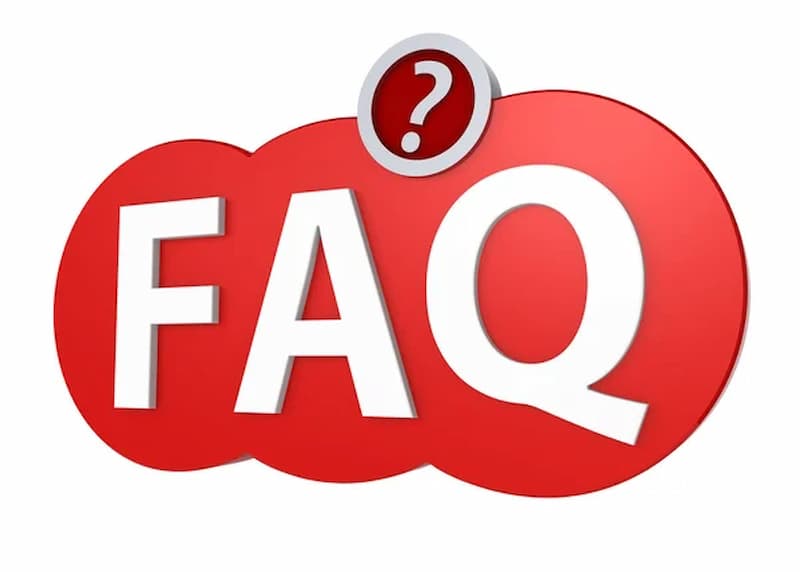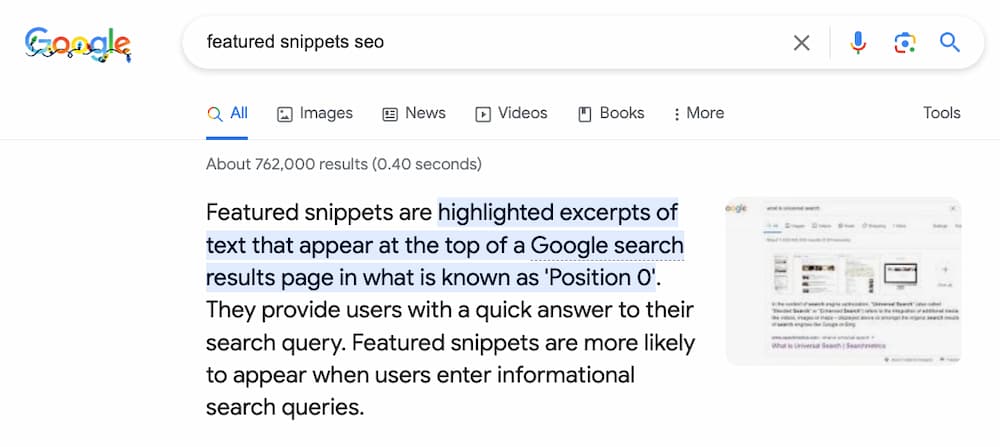Answer Engine Optimization - What It Is and How To Utilize It
As technology advances, the way users search for information is changing too. This shift is leaning more toward Answer Engine Optimization, which focuses on providing quick and direct answers to user queries. In the past, users would sift through search results, feeling limited by the first page of results. Users now expect immediate answers without needing to click on a web page.
So what is the purpose of AEO?
Answer engines use AI to provide instant and precise responses to user queries. With the increasing use of chatbots, smart assistants, and voice search, AI technology is quickly becoming an essential part of everyday life. Popular answer engines include ChatGPT, Google’s Search Engine (SGE), and Microsoft’s Bing chatbot.
In this article, we will explore what AEO is, how it differs from traditional SEO, and how you can use it effectively to stay ahead in SERPs.
What Is Answer Engine Optimization (AEO)?
AEO, or Answer Engine Optimization, is part of your SEO strategy where you structure your content to provide zero-click answers to user queries and position your content as the primary source of information. Zero-click results are when Google displays content (typically answers to general questions) without redirecting you to a particular website. These are displayed as snippets in the right column of the SERP or in the meta descriptions below a link to a full article.
The transition from search to answer engines changes how users seek and consume information. Traditional searches resulted in lists of relevant web pages, requiring users to navigate multiple web pages and ask multiple questions in Google Search to piece answers together.
Answer engines are becoming increasingly popular because AI and Natural Language Processing (NLP) continue to learn from each other and improve. These algorithms continue to understand the context in which users are looking for information and offer direct and accurate responses. This simplifies the SERP information and eliminates the need to sift through links.
As a website owner, you’re likely familiar with the term, “Content is king.” For Google’s transition from link results to answer results, you want your content to be easily found, prominently displayed, and simply read for answer engines and voice search assistants.

What Is The Difference Between SEO and AEO
While SEO and AEO share common goals of improving online visibility and attracting relevant traffic, they differ in their focus and execution. SEO is a broader strategy to improve (or maintain) website visibility and rankings. It involves maintenance, research and consistency to improve organic traffic. The key aspects of SEO include
- keywords,
- featured snippets,
- structured content,
- link building,
- and site structure.
AEO, on the other hand, is a focused approach that targets the answer engine and AI algorithms. It involves creating content that directly answers user questions (i.e. People also ask…) clearly and concisely. The goal is to position your content as the go-to answer to these queries. This is where your audience research is highly important. Pay special attention to
- user intent,
- optimizing your content structure,
- and using language that is easily understandable by AI answer engines.
The Intersection of SEO and AEO
While SEO and AEO are not identical, they complement each other. Combining both strategies ensures your brand remains visible and relevant. AEO is not a replacement for traditional SEO but rather an enhancement that adapts to changing search behaviors. Spend time focusing on SEO to secure your brand as a recognized source of accurate information. Then use AEO to provide deeper context on these answers.
For example, let’s say you sell fitness equipment. Traditional SEO efforts involve optimizing your category pages for broader keywords like “home gym equipment” or “exercise machines.” This helps your website rank higher in search results when users are looking for general information related to fitness equipment.
However, when users start seeking specific information like “What are the best cardio machines for weight loss?” or “How to assemble a treadmill?” they are looking for more conversational and detailed results. This is where AEO steps in. Use the specific questions your customers ask as headers in your content and answer them concisely for Google to showcase as featured snippets.
Blending SEO and AEO tactics cover a wider range of user queries (general and specific) so your website ranks well for both audiences.
How do Chatbots and Virtual Assistants use AEO?
Chatbots and virtual assistants rely on AEO content to provide direct and immediate responses to user queries. Common virtual assistants include Amazon’s Alexa, Apple’s Siri, Google Assistant and Microsoft’s Cortana. When you say, “Hey [Alexa, Siri, Google, Cortana]…”, these assistants use NLP to recognize your question and then immediately locate the top results for the keywords you use.
Chatbots, often integrated into business websites, use your AEO to answer FAQs about your business, products, or services. These answers are frequently based on pre-defined content or real-time data.
By capitalizing your AEO strategies, you can enhance your presence on AI platforms and ensure that your content is positioned as a reliable source for quick and precise answers to user inquiries.
Preparing for AEO
To harness the power of AEO, website owners must develop a well-defined strategy that complements traditional SEO efforts. AEO prioritizes optimizing content for answer-based queries, meaning content should be concise, clear, and easily digestible by AI and machine learning algorithms.
One effective strategy is incorporating a Q&A-style format into your content, including frequently asked questions (FAQs) in articles. Additionally, structuring long-form content around key questions and scenarios relevant to your audience’s conversational searches can be highly beneficial.
Q&A-style Format
Incorporating a Q&A-style format into your content is a highly effective strategy to prepare your website for Answer Engine Optimization (AEO). Identify your target audience’s most common questions about your industry, products, or services. These questions should reflect the information users seek when conducting voice searches or engaging with chatbots and virtual assistants.
Once you’ve compiled a list of FAQs, craft concise and clear answers that directly address each question. Ensure that your responses provide value and are easy for both users and AI answer engines to understand.

Take it further by organizing your long-form content around key questions and scenarios that align with conversational searches. When creating articles or blog posts, think about the questions users might ask and structure your content accordingly. This approach not only makes your content more accessible to answer engines but also enhances the user experience by delivering information in a format that mirrors their natural inquiries.
For instance, if you run an e-commerce website selling electronic gadgets, you might create an article titled “Top Gadgets for Tech Enthusiasts” and structure it as a series of questions like “What are the latest smartphones in 2023?” or “Which smartwatches offer the best value for money?”
By adopting this Q&A-style format, you optimize your content to align seamlessly with AEO, making it easier for users to find quick and direct answers to their queries.
Structuring Content for Snippets
To increase your chances of being featured in these prominent SERP features, continue your identification of the most common questions relevant to your niche or industry and focus on the keywords that your target audience frequently asks.
Once you’ve identified these questions and keywords, create content that directly addresses them. Craft your responses clearly and concisely, ensuring they are easily digestible for both users and search engines. As part of your on-page SEO, utilize bullet points, numbered lists, or tables to present information in a structured and organized format. These formats are more likely to be featured as snippets because they offer quick and direct answers to user queries.
Additionally, implementing schema markup on your website is another essential step in structuring content for featured snippets. Schema markup provides search engines with additional context about your content, helping them understand its relevance to user queries.
Using schema markup to label key information such as product details, reviews, FAQs, or step-by-step instructions makes it easier for search engines to identify and feature your content in rich snippets or answer boxes.
The Four Types of Featured Snippets
Featured snippets are highly coveted for several reasons. They often receive a significant share of clicks, even more than the top organic search result. When your content features as a snippet, you control a larger portion of search real estate, and Google’s choice to quote your content implies legitimacy and trust in your website’s content.

Paragraph Snippets
Paragraph snippets are a specific type of featured snippet that displays a brief definition or answer for a particular topic in search engine results pages (SERPs). These snippets are typically presented in paragraph form and appear at the top of the organic search results, often referred to as “position zero.” Paragraph snippets aim to provide users with immediate, concise, and informative answers to their queries, eliminating the need to click on multiple search results.
To best utilize paragraph snippets for your website and leverage them as part of your Answer Engine Optimization (AEO) strategy, it’s essential to focus on creating high-quality, authoritative, clear, and concise content that directly addresses common user queries. Ensure that you present answers in a way that search engines can easily extract and display as paragraph snippets. Use clear headings, concise language, and logical formatting to make your content snippet-worthy.
List Snippets
List snippets are a specific type of featured snippet that presents information in an organized list format on search engine results pages (SERPs). These snippets are valuable for displaying step-by-step instructions, top-10 lists, itemized details, or any content you can present as a numbered or bulleted list.
Identify common queries that lend themselves to a list format, such as “top tips for,” “step-by-step guide to,” or “best practices for.” Craft detailed and informative lists that directly address these queries, ensuring each item is clear, concise, and valuable to the user. Use proper HTML markup for lists, such as <ul> for unordered lists or <ol> for ordered lists, to make it easier for search engines to identify and display your content as list snippets.
Table Snippets
These snippets are handy for displaying data, comparisons, statistics, or any information you can organize in rows and columns. Table snippets stand out in search results due to their structured and visually appealing presentation, providing users with quick access to organized information without the need to click through to a webpage.
To harness the power of table snippets for your website, consider the type of data or information that your audience frequently seeks, which you can represent in a table format. Whether you’re comparing product specifications, displaying pricing details, or showcasing statistical data, organizing this information in well-structured tables can improve your chances of appearing in table snippets.
To optimize your content for table snippets, create tables with clear headings and rows that accurately represent the data or information you’re presenting. Ensure that your tables are responsive and mobile-friendly, as many users access search results from mobile devices.
Video Snippets
Video snippets are a dynamic and engaging type of featured snippet that includes a video thumbnail alongside a brief description or excerpt from the video content within search engine results pages (SERPs). Design these snippets to capture the attention of users and provide them with a preview of video content that directly relates to their search queries.
Video snippets are a fantastic way to stand out in search results, especially for those who prefer visual content or are looking for demonstrations, tutorials, or product reviews. Consider producing videos that address commonly asked questions, provide in-depth explanations, or offer visual demonstrations of your products or services.
To optimize your video content for snippets, create compelling video titles and descriptions that accurately reflect the video’s content and target keywords. Utilize schema markup specifically designed for video content to provide search engines with essential information, such as video duration, thumbnail URL, and publication date. Ensure that your videos are hosted on a reputable platform (like YouTube) and that they load quickly and play smoothly, even on mobile devices.
Navigating Answer Engine Optimization with My Website Spot
Answer Engine Optimization (AEO) is the future of SEO for websites looking to provide quick and direct information in response to user queries. As answer engines and AI-driven search continue to evolve, AEO becomes increasingly important for staying competitive and meeting user expectations.
By understanding the shift from search engines to answer engines, differentiating AEO from traditional SEO, and implementing AEO strategies effectively, you can enhance your brand’s visibility, credibility, and relevance in the evolving world of search.
My Website Spot is here to assist you in navigating Answer Engine Optimization and ensuring that your content is optimized to meet the evolving needs of users. Contact us today for expert guidance and SEO services to empower your brand to thrive in answer engines. Take advantage of the opportunity to stay ahead in the ever-evolving landscape of search engine optimization.



